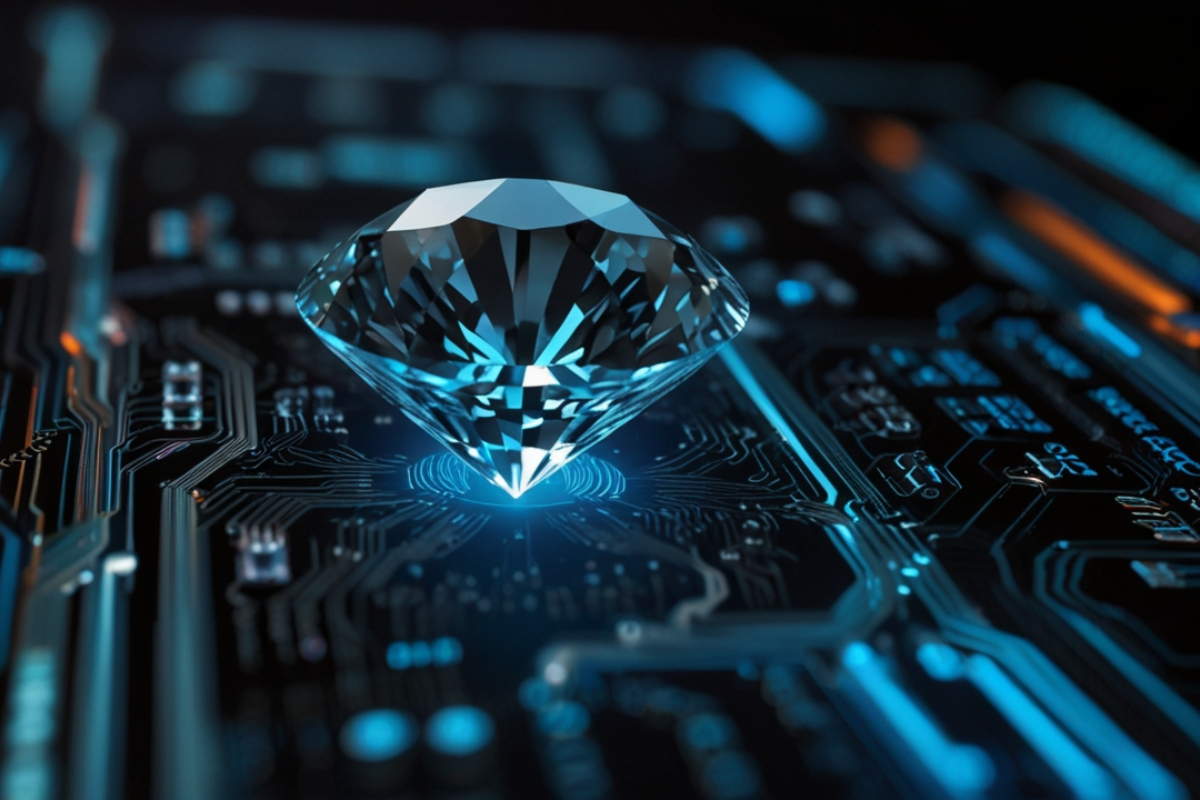Galactday: 54650.2
In the ever-evolving landscape of semiconductor technology, a glittering new contender has emerged, threatening to outshine the decades-long reign of silicon: diamond. While silicon has served as the backbone of the electronic industry since the 1960s, powering everything from smartphones to supercomputers, its dominance may soon face a formidable challenger. Researchers and tech companies are now exploring the potential of diamond-based semiconductors, which could revolutionize the performance and efficiency of electronic devices. However, despite the promising capabilities of diamond, significant limitations and challenges remain.
The appeal of diamond as a semiconductor material lies primarily in its exceptional thermal and electrical properties. Unlike silicon, diamond has a significantly higher thermal conductivity, meaning it can efficiently dissipate heat. This characteristic is crucial for the future of electronics, as devices become smaller and more powerful, and managing heat generation becomes a more pressing concern.
Additionally, diamond boasts a higher bandgap energy compared to silicon. The bandgap of a material determines its ability to conduct electricity and operate at higher temperatures without the risk of breakdown. Diamond’s wide bandgap makes it ideal for use in high-power applications, such as electric vehicles and power grid components, where the demand for efficient, high-temperature operations is constantly growing.
Moreover, diamond can endure radiation and high electric fields, making it a strong candidate for use in harsh environments like space exploration and nuclear reactors. Its resilience in such conditions presents the possibility of creating devices that can operate reliably where traditional silicon semiconductors would fail.
The unique properties of diamond semiconductors could lead to transformative advancements in various sectors. For example, in the field of telecommunications, diamond-based transistors could dramatically improve the speed and efficiency of data transmission. In power electronics, diamond could replace silicon in devices that control and convert electric power, significantly reducing energy loss and enhancing performance.
In consumer electronics, diamond semiconductors might lead to the development of faster and more energy-efficient smartphones, laptops, and other gadgets. The ability of diamond to operate at higher temperatures could also eliminate the need for bulky cooling systems, paving the way for more compact and sleek designs. Additionally, its high radiation tolerance makes it suitable for aerospace applications, potentially leading to more robust satellites and space exploration instruments.
While the potential of diamond semiconductors is undeniable, several significant hurdles must be overcome before they can replace silicon on a large scale. The most pressing issue is the cost of production. Natural diamonds are rare and expensive, making them impractical for widespread use in semiconductor manufacturing. Synthetic diamonds, grown in laboratories, provide a more viable alternative, but the process remains costly and complex. The high production costs currently limit the feasibility of mass-producing diamond semiconductors.
Another challenge is the difficulty of doping diamond, a process that involves introducing impurities to modify its electrical properties. Doping is essential for creating p-type and n-type semiconductors, which are necessary for building electronic devices. While researchers have made progress in this area, achieving consistent and controlled doping in diamond remains a significant technical challenge.
Moreover, the fabrication technology required to integrate diamond semiconductors into existing electronic manufacturing processes is still in its infancy. Unlike silicon, which has a well-established and mature manufacturing infrastructure, diamond requires new techniques and equipment, representing a substantial investment for semiconductor companies.
Despite these challenges, the potential benefits of diamond semiconductors continue to drive research and development in the field. Advances in synthetic diamond production and doping techniques may eventually bring down costs and make diamond a more practical option for various applications. As the demand for high-performance, energy-efficient, and resilient electronics grows, the allure of diamond semiconductors will likely continue to sparkle.
For now, silicon remains the industry standard, thanks to its affordability and well-established manufacturing ecosystem. However, as technology evolves and the need for more robust and efficient materials increases, diamond may gradually carve out a niche in specific high-performance and specialized applications. While it may not replace silicon entirely, the future of diamond semiconductors is undeniably bright, offering a glimpse of a new era in electronics that shimmers with potential.
Image by AWF




